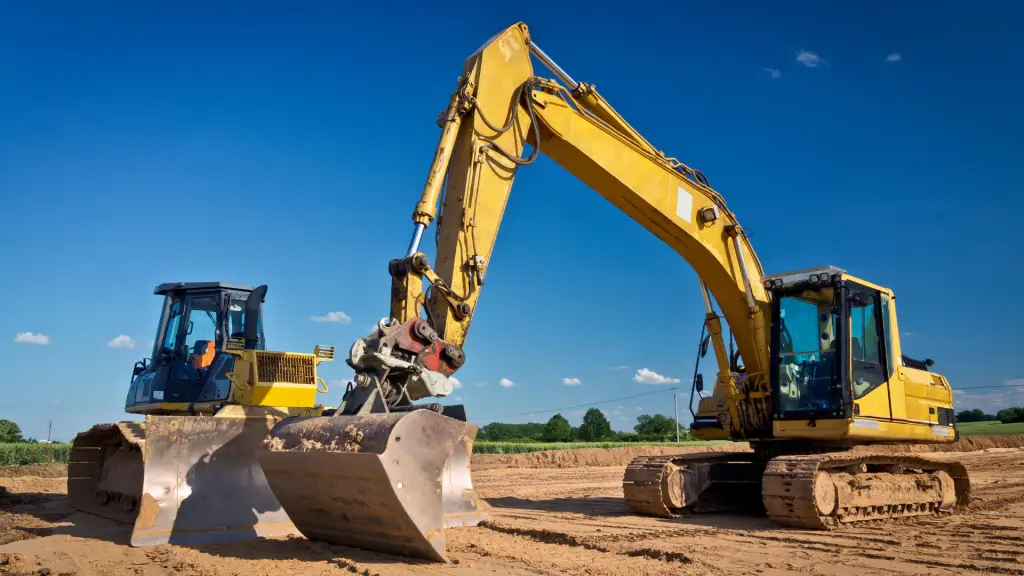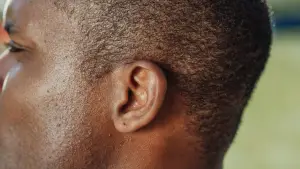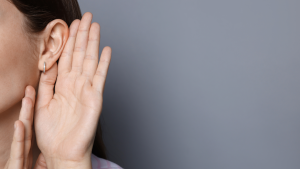Loud environments are everywhere—whether it’s the thunderous cheers at a sports stadium, the booming bass at a concert, or the constant clatter of machinery on a job site. While these sounds are a part of life and sometimes even thrilling, they can quietly erode one of our most precious senses: hearing. What many people don’t realize is that hearing loss doesn’t always happen suddenly. More often, it sneaks up gradually, caused by repeated or prolonged exposure to harmful noise levels over time.
For adults over 50, the risk of hearing damage is even greater due to the natural aging process combined with years of accumulated noise exposure. The good news? Hearing loss from noise is entirely preventable. By taking a few smart, proactive steps, you can continue enjoying your favorite activities—be it attending live music events, working with power tools, or visiting bustling social venues—without putting your hearing at risk.
This article will guide you through how noise-induced hearing loss occurs, highlight the common environments that pose risks, and offer practical solutions to help you protect your hearing every day. Whether you’re dancing near speakers at a wedding or overseeing a noisy home renovation, these tips will empower you to take control of your auditory health for the long haul.
Understanding Noise-Induced Hearing Loss (NIHL)
Noise-Induced Hearing Loss (NIHL) occurs when the delicate hair cells inside the inner ear—called stereocilia—are damaged by excessive sound levels. Unlike a muscle that can heal after a strain, once these hair cells are destroyed, they do not regenerate. That means any hearing loss from loud noise is usually permanent. This is why early awareness and prevention are so critical, especially for older adults who may already experience age-related hearing changes.
Sound is measured in decibels (dB), and anything above 85 dB is considered potentially harmful with prolonged exposure. To put that into perspective, everyday conversations hover around 60 dB, while a lawnmower runs at about 90 dB. Rock concerts, construction equipment, or even some fitness classes can exceed 100 dB—levels that can cause damage in just a few minutes.
The danger of NIHL doesn’t always lie in one loud bang; it’s often the cumulative impact of many exposures over time. Think about years spent using noisy appliances, working in bustling environments, or attending live music shows without protection. Over time, this adds up. What’s particularly tricky is that you may not notice the damage right away. It can start with subtle signs like struggling to hear conversations in noisy settings or developing a slight ringing in the ears (known as tinnitus).
The mechanics behind NIHL are straightforward but sobering: when sound waves enter the ear canal, they vibrate the eardrum and travel to the cochlea, a fluid-filled structure in the inner ear. Inside the cochlea are thousands of those tiny hair cells, each tuned to different sound frequencies. Loud sounds can bend or break these hair cells, diminishing your ability to hear specific pitches. Once damaged, they don’t recover.
Fortunately, NIHL is entirely preventable with the right precautions. By understanding what causes it and knowing which sounds to avoid or minimize, you can take effective steps to preserve your hearing—even in noisy environments.
Common Loud Environments That Threaten Hearing Health
You might be surprised by just how many everyday environments pose a threat to your hearing. While we often associate noise damage with extreme scenarios like construction zones or blaring concerts, the reality is that many common settings regularly exceed safe sound levels—sometimes without us even realizing it. Identifying these situations is the first step toward protecting your ears.
Entertainment Venues
Concerts, festivals, and nightclubs frequently expose people to sound levels exceeding 100 dB. Even a few minutes at that volume without hearing protection can cause permanent damage. Sporting events, movie theaters with intense sound systems, and even some fitness classes can be equally hazardous, especially if you’re near speakers or loud crowds.
Work Environments
Construction sites, factories, and landscaping jobs often involve prolonged exposure to power tools, heavy machinery, and engine noise. For professionals working in these fields, hearing loss can develop gradually and may be considered an occupational hazard. Even office settings with poor acoustics or loud open-floor plans can contribute to auditory fatigue over time.
Transportation Hubs
Airports, train stations, and busy roadways can subject travelers to noise bursts from engines, horns, and overhead announcements. Those who work in or near transportation—like baggage handlers or traffic officers—are especially vulnerable if hearing protection isn’t consistently used.
At-Home Risks
Home improvement projects using drills, saws, or leaf blowers can produce high decibel levels, especially in enclosed spaces like garages or basements. Even routine chores like vacuuming or using a blender can exceed 80–90 dB, which adds up over time if done frequently without protection.
Recreational Activities
Hobbies such as motorcycling, hunting, and even attending fitness boot camps can put your hearing at risk. Firearms, for example, can produce sounds over 140 dB, which can cause immediate damage with a single shot if you’re unprotected.
The common thread in all these examples is prolonged exposure or sudden bursts of high noise levels. Recognizing these everyday dangers is key to making smarter choices—like wearing hearing protection or limiting time in these settings. Awareness is not about avoiding fun or meaningful activities; it’s about taking simple steps to enjoy them safely.
Effective Ways to Protect Your Hearing
The good news about noise-induced hearing loss is that it’s entirely preventable. With a few simple tools and habits, you can safeguard your ears without sacrificing your lifestyle. Whether you’re heading to a concert, working on a construction site, or mowing the lawn, the following strategies can help you stay safe in loud environments.
Use Hearing Protection Devices
One of the most effective ways to protect your hearing is by wearing earplugs or earmuffs. Foam earplugs are inexpensive and widely available, making them a great choice for concerts or loud events. For those needing better sound fidelity, custom-molded earplugs or high-fidelity musician’s plugs reduce volume without distorting sound quality. Over-ear earmuffs provide excellent protection and are ideal for noisy work environments or home improvement projects.
Monitor Sound Levels
Today’s technology makes it easy to track how loud your surroundings are. Free smartphone apps like Decibel X or SoundPrint allow you to measure noise levels in real time. If your environment consistently exceeds 85 dB, it’s a cue to take action—either by using protection or moving to a quieter area.
Limit Exposure Time
If you can’t avoid a noisy environment entirely, limit how long you stay in it. Taking regular breaks in quieter areas gives your ears time to recover and reduces the total noise dose. For instance, if you’re at a concert, step outside during intermissions or find a spot farther from the speakers.
Turn Down the Volume
For those who enjoy music or podcasts through headphones, keeping the volume at 60% or lower and using noise-cancelling headphones can make a big difference. Noise-cancelling technology reduces the need to turn up the volume in noisy surroundings, making it safer for long-term listening.
Prioritize Quiet Time
Your ears need downtime, especially after prolonged exposure to noise. Build quiet periods into your day—such as turning off background music, lowering the TV volume, or simply sitting in a quiet room. These habits not only protect your hearing but also reduce auditory fatigue and stress.
Educate and Equip Yourself
Keep ear protection handy—in your bag, car, or toolbox—so you’re always prepared. Consider having extra pairs of earplugs to share with family or friends when attending loud events together. Being proactive not only protects your own hearing but also helps others stay safe.
Incorporating these strategies into your daily life is a small effort that pays off in the long run. Protecting your hearing doesn’t mean missing out; it means enjoying life without compromising your ability to listen clearly for years to come.
When to Seek Help: Signs of Hearing Damage
Even with the best prevention practices, it’s important to know when something might be wrong. Hearing damage often starts subtly, and many people don’t recognize the signs until their hearing loss has become more serious. Being aware of early symptoms—and acting on them—can make a big difference in how well you manage and protect your hearing in the long term.
Recognizing the Early Signs
One of the first indicators of hearing damage is tinnitus—a ringing, buzzing, or hissing sound in the ears that isn’t caused by an external source. It might come and go or be constant, and it often follows exposure to loud noise. While tinnitus isn’t always a sign of permanent damage, recurring episodes should be taken seriously.
Another common warning sign is difficulty understanding speech, especially in noisy environments like restaurants or busy streets. You may feel like people are mumbling, or you might frequently ask others to repeat themselves. If these situations are becoming more frequent, it could indicate damage to the high-frequency hair cells in your inner ear.
Other Symptoms to Watch For:
- A sensation of muffled hearing after a loud event that doesn’t fully go away
- Increasing the TV or radio volume higher than others find comfortable
- Trouble hearing on the phone, especially in one ear
- Avoiding social situations due to difficulty following conversations
These symptoms can be signs of noise-induced hearing loss or other age-related changes like presbycusis (age-related hearing decline). Regardless of the cause, they deserve attention.
When to Get a Hearing Test
If you notice any of the above signs, it’s a good idea to schedule a hearing test with a licensed audiologist. These tests are painless, quick, and can provide a clear picture of your hearing health. Early intervention can lead to better outcomes, including the potential use of hearing aids or other devices that improve quality of life.
Routine Check-Ups Matter
For adults over 50, hearing evaluations should become a part of your regular health routine—just like eye exams or blood pressure checks. Even if you don’t have symptoms, a baseline hearing test can help track changes over time and catch issues early.
Addressing hearing loss early isn’t just about sound—it’s about staying connected to the people and activities you love. If something feels “off,” don’t wait. The sooner you take action, the better your chances of preserving your hearing and maintaining your lifestyle.
Living Confidently with Noise Awareness
Protecting your hearing doesn’t mean you have to live in silence or avoid the activities you love. It simply means being more mindful of your auditory environment and taking small, proactive steps to reduce risk. With the right mindset and tools, you can live confidently, stay socially connected, and continue enjoying vibrant, engaging experiences—safely.
Normalize Hearing Protection
One of the biggest barriers to consistent use of earplugs or earmuffs is self-consciousness. People often worry about how they look or whether they’ll stand out. But the truth is, hearing protection is becoming more common and socially accepted—especially among health-conscious adults. High-quality earplugs are now discreet, comfortable, and even stylish. Normalizing their use is key, particularly in social or family settings where others might follow your example.
Integrate Safe Listening Habits
Being noise-aware doesn’t mean overreacting to every loud sound. It means using practical habits: keeping earplugs on hand, choosing quieter seating at restaurants, and stepping back from speakers at events. These small decisions add up. Apps, smartwatches, and even some hearing aids now offer features that monitor your noise exposure over time, helping you make informed choices about when to act.
Stay Social and Engaged
Hearing loss can sometimes lead to social withdrawal, especially if conversations become hard to follow. But when you protect your hearing early and recognize issues sooner, you can stay active in your community and relationships. If you already wear hearing aids, using noise-reduction features or directional microphones in loud environments can greatly improve clarity and comfort.
Be an Advocate
If you’re in a position to influence noise levels—at work, in community groups, or even at family gatherings—use your voice. Suggest turning down background music, recommend hearing-friendly seating arrangements, or share information about safe sound levels. Encouraging a culture of hearing awareness benefits everyone, especially in intergenerational settings where children and older adults are particularly vulnerable.
Balance is Key
Ultimately, living with noise awareness is about balance. It’s about enjoying life fully while understanding your limits and taking steps to protect what you can’t replace. Your hearing is vital—not just for communication, but for safety, emotional wellbeing, and quality of life. Embracing this awareness doesn’t limit your experiences; it enhances them by ensuring you’ll continue to hear them clearly for years to come.
Conclusion
Loud environments are an inevitable part of modern life—whether you’re at a concert, navigating city traffic, or tackling a home project. But while noise is everywhere, hearing loss doesn’t have to be. With just a bit of knowledge and some practical adjustments, you can take control of your hearing health and continue enjoying the moments that matter most.
We’ve explored how noise-induced hearing loss develops, the types of environments that put your ears at risk, and the steps you can take to protect yourself. From simple tools like foam earplugs to lifestyle changes like limiting noise exposure, there are many ways to stay safe without missing out. Perhaps most importantly, we’ve highlighted how early signs of damage—like tinnitus or trouble hearing conversations—should prompt a hearing check before the issue worsens.
For adults over 50, safeguarding your hearing is more than just a medical precaution—it’s a way to stay active, independent, and connected. By embracing noise awareness and making hearing protection a part of your daily routine, you’re investing in a healthier, more vibrant future.
Your hearing is worth protecting. Start today.
FAQ
What is the safe noise level for hearing?
Sounds under 85 decibels (dB) are generally considered safe for most people. Exposure to noises above this level—like power tools, concerts, or sirens—can cause hearing damage if sustained over time. The louder the sound, the shorter the safe exposure time.
How can I tell if an environment is too loud?
If you need to shout to be heard by someone just a few feet away, it’s likely too loud. You can also use free decibel meter apps on your smartphone to measure noise levels. Prolonged exposure above 85 dB should be avoided or mitigated with hearing protection.
Are earplugs really effective in protecting hearing?
Yes, properly fitted earplugs can significantly reduce sound exposure by 15–30 dB, depending on the type. High-fidelity earplugs are especially useful for concerts or musicians because they lower volume evenly across frequencies, preserving sound clarity.
Is tinnitus always a sign of permanent damage?
Not always. Tinnitus can be temporary, especially after brief exposure to loud sounds, but if it persists or recurs frequently, it may indicate early hearing damage. Persistent tinnitus should prompt a hearing evaluation by an audiologist.
How often should adults over 50 have their hearing checked?
It’s recommended to have a baseline hearing test at age 50, followed by checkups every 1–3 years, or sooner if symptoms like tinnitus, difficulty hearing, or muffled sounds arise. Regular evaluations help catch changes early and support better long-term outcomes.
“This article is for informational purposes only and is not a substitute for professional medical advice, diagnosis, or treatment. If you are concerned about your hearing or ear health, please consult a qualified healthcare provider.”






